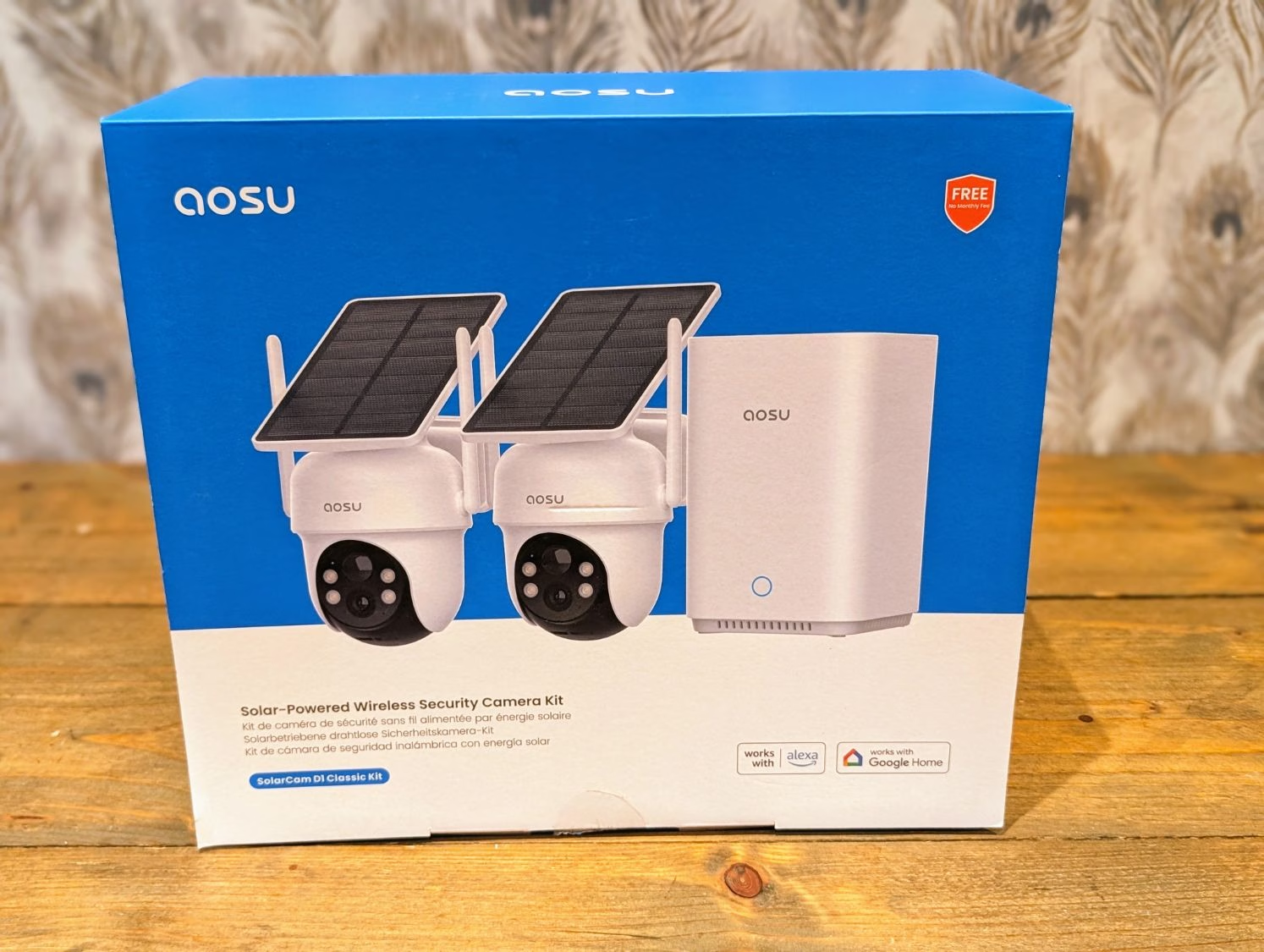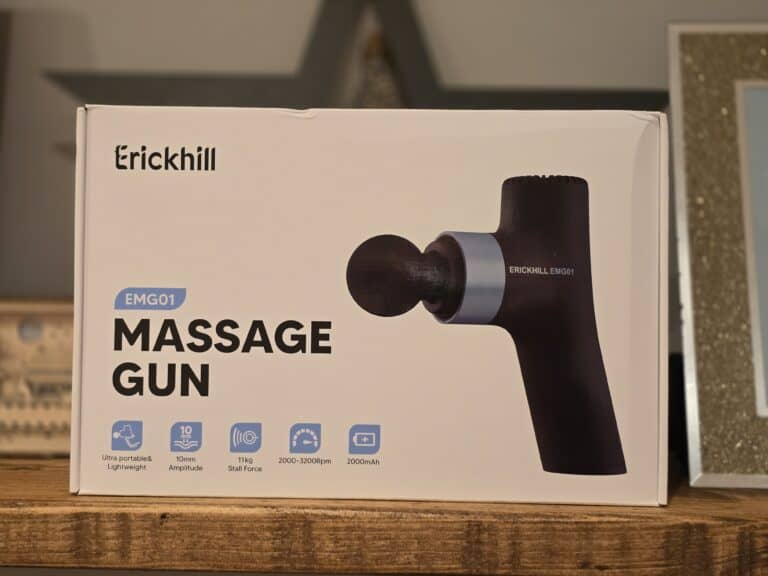Any links to online stores should be assumed to be affiliates. The company or PR agency provides all or most review samples. They have no control over my content, and I provide my honest opinion.
Aosu SolarCam D1 Classic Review with Upgraded HomeBase & Six Cameras
Summary
The upgraded Aosu SolarCam D1 Classic Kit delivers solid performance with sharper 5MP resolution, improved Wi-Fi range, and a HomeBase capable of supporting up to six cameras. The built-in 32GB storage and option for 1TB expansion remove the hassle of swapping SD cards, while solar charging maintains strong battery levels even in cloudy British weather. Installation remains straightforward, and the app provides reliable control with useful features such as multi-camera viewing and motion zones. However, the price jump over the previous model feels steep, especially as overall image quality improvements are incremental. For those needing six cameras, it is a capable, low-maintenance system, but the older four-camera kit still offers better value for smaller setups.
Overall
80%-
Overall - 80%80%
Pros
Sharp 5MP image quality
Reliable solar charging
Easy multi-camera setup
Built-in expandable storage
Strong app performance
Cons
Higher cost than older model
Minor motion blur at night
Occasional detection errors
Pricey for smaller setups
I reviewed the Aosu C9C-4H SolarCam D1 Classic Kit Review a little over a year ago and was impressed with the kit, with the standout features being the built-in solar panel for improved battery life, auto tracking, pan/tilt, and motion detection.
Aosu has now upgraded this system, which now includes support for six cameras.
So, are the improvements worth the new, higher price point?
Related Reviews
- Aqara Doorbell Camera Hub G410 Review
- Reolink Altas Review
- Aqara Camera Hub G5 Pro PoE Review
- Reolink Duo 3 WiFi Review
- EufyCam S3 Pro Review vs EufyCam S300
- Reolink Battery Doorbell Review
Aosu SolarCam D1 Classic Kit vs Upgraded SolarCam D1 Classic Specification
Cameras
- Resolution: The latest version ups the game from 3MP/2K resolution to 5MP/3K Ultra-HD, offering crisper and more detailed footage. This improvement is particularly appreciated for identifying faces and vehicle registration plates at greater distances.
- Wi-Fi Range: Extended Wi-Fi capabilities now allow for the connection and management of up to eight cameras, giving greater flexibility for larger properties.
- Solar Charging: All-condition solar charging supports use in low light environments, partial shading, and can function at temperatures as low as 14°F. The integration of solar panels provides improved battery longevity by topping up the cameras throughout the day.
- AI Detection: Local AI now supports the detection of humans and vehicles, focusing on key areas and offering smarter alerts.
HomeBase
- Camera Support: The new HomeBase supports up to six connected cameras (previously only four), which makes it suitable for users needing comprehensive coverage of larger homes or multiple outbuildings.
- Auto Tracking: 360° protection is facilitated with synchronised surveillance, providing seamless coverage via auto tracking capabilities.
- Multi-Cam Viewing: Upgraded app functionality allows monitoring of up to four live streams simultaneously from the Aosu app.
- Network Stability: The system demonstrates improved network stability and faster connectivity, resulting in more reliable and responsive live viewing.
- Storage: Where the older model relied on removable SD cards with limited capacity, the new HomeBase includes 32GB of built-in storage via a microSD card, with the option to expand up to 1TB, along with unlimited cloud storage. This is a welcome change as it removes the need to frequently swap out SD cards for additional capacity.
- Privacy: Advanced centralised data encryption means footage is stored securely, which is a requirement for many UK households conscious of privacy.
Overall, the main differences are:
- Improved resolution on the cameras
- Improved WiFi
- Homebase now supports up to 6 cameras
- Homebase now includes 32GB of built-in storage
Unboxing / Design
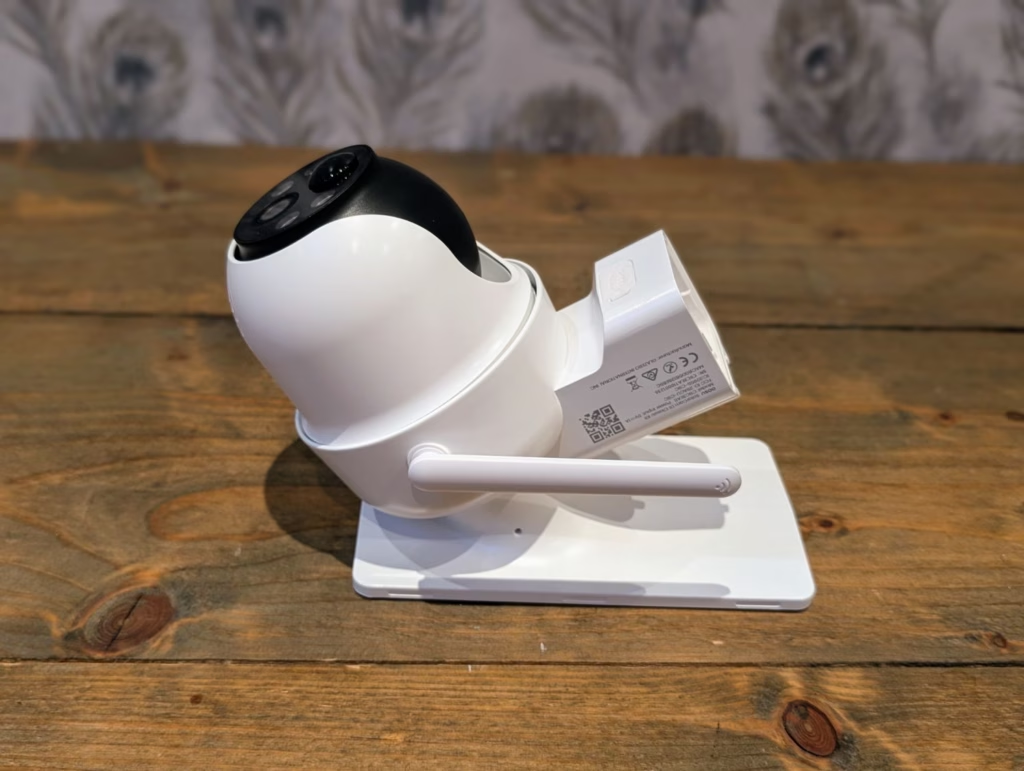
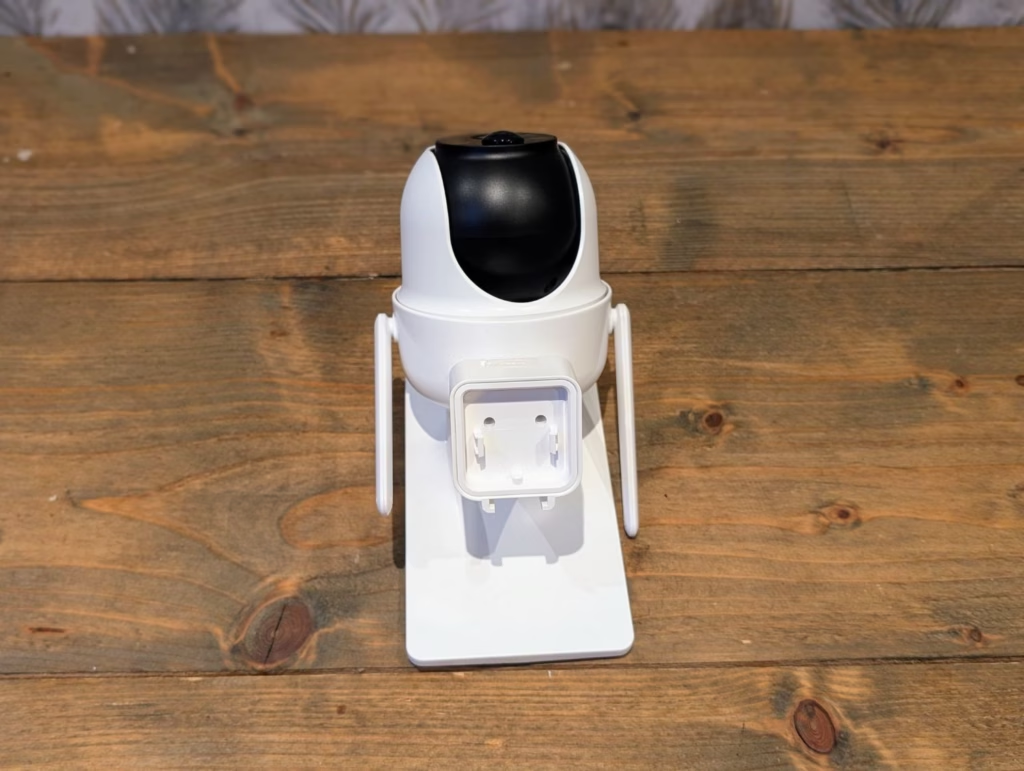
The cameras themselves feel robust and are designed to withstand British weather conditions without issue, including rain, frost, and summer temperatures.
The kit includes the HomeBase, cameras, solar panels, mounting brackets, charging cables, and screws. At first glance, the mounting hardware is straightforward, making initial installation approachable even for DIY novices.
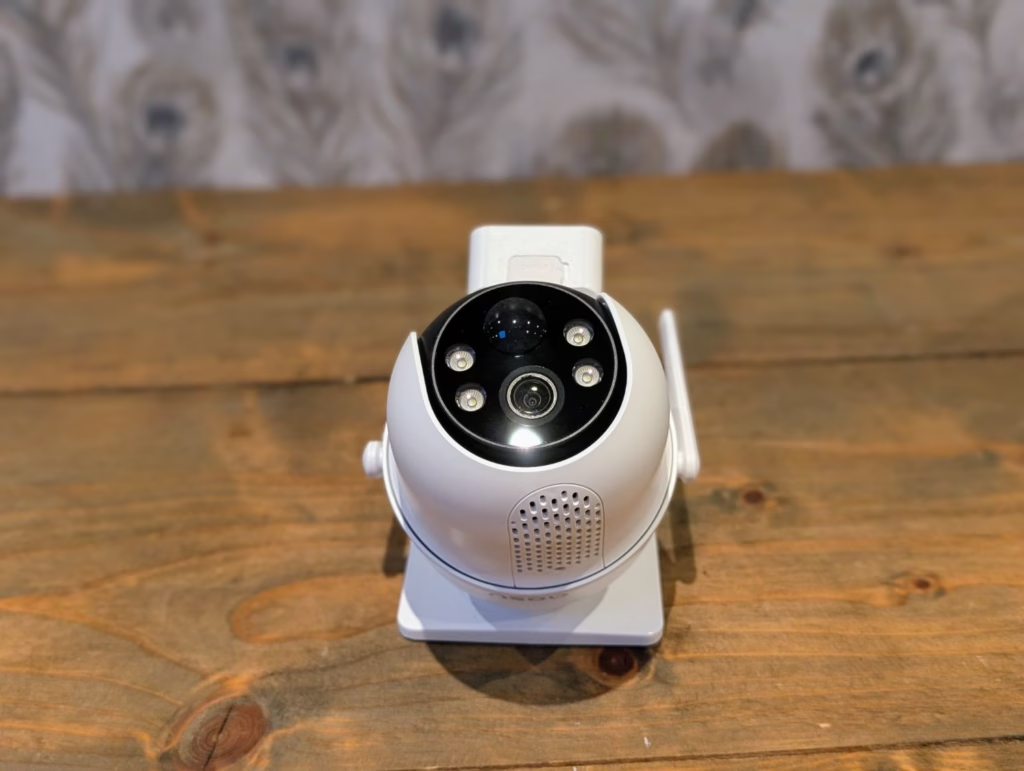
The cameras themselves retain a compact and discreet profile, making them easy to position without drawing unnecessary attention. The included solar panels are efficient and unobtrusive, and the cable length provides flexibility for placement in areas that receive the most sunlight.
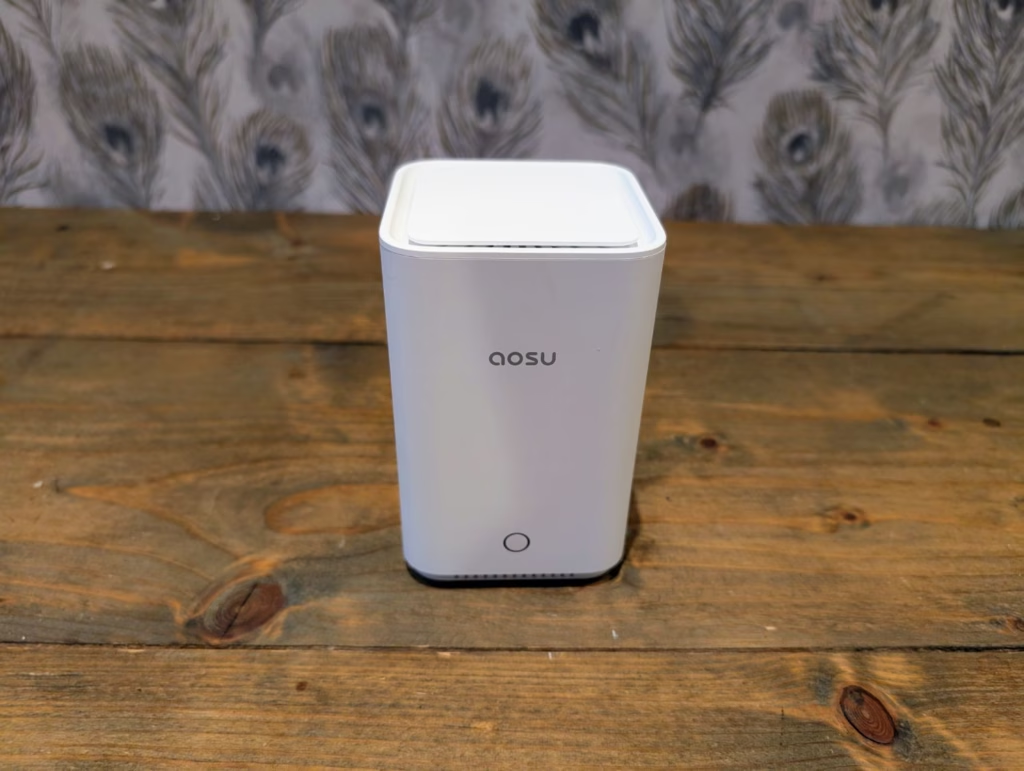
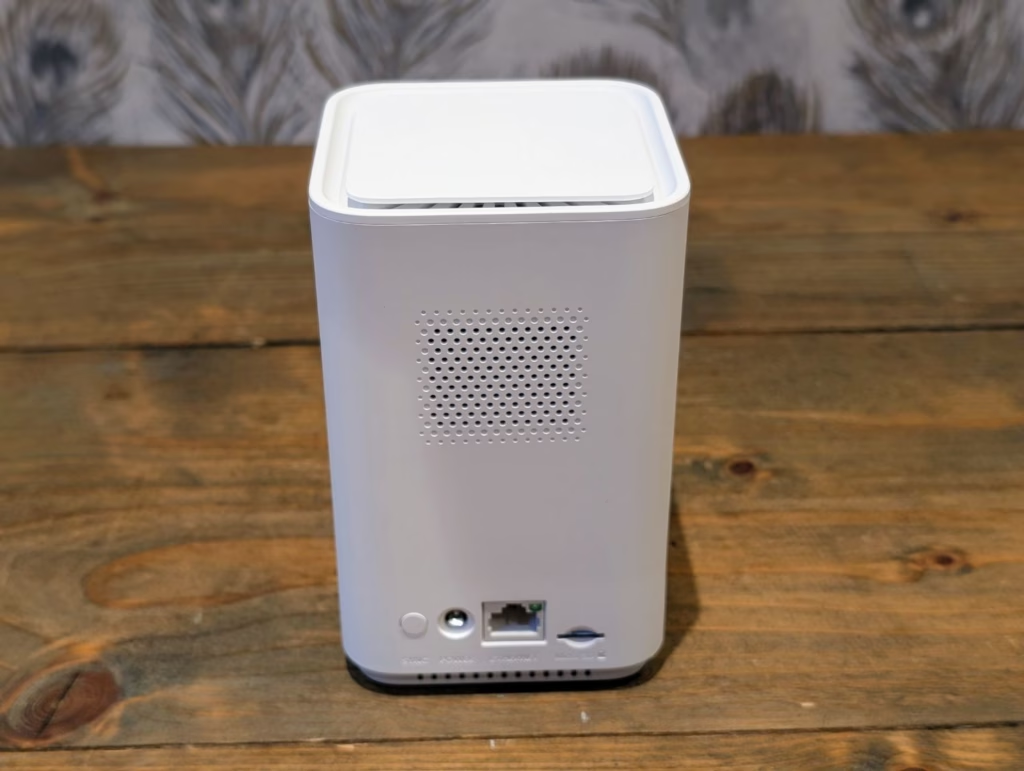
Set up
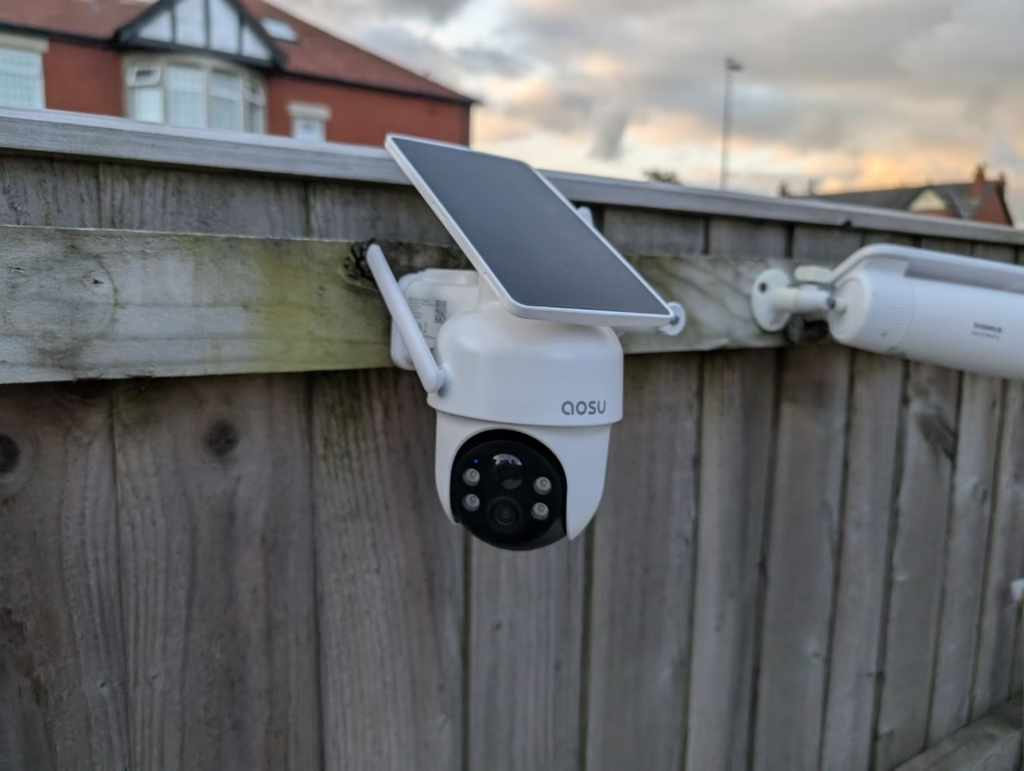
Setting up the Aosu SolarCam D1 Classic is largely unchanged from the previous model and remains user-friendly. The instructions are clear, with step-by-step guidance provided through both the printed manual and the Aosu app.
Connecting the cameras to the HomeBase is intuitive, aided by clear prompts in the app. Adding additional cameras is simply a matter of scanning the QR code and following the on-screen steps. Wi-Fi pairing proved stable during testing, even when cameras were mounted at the farthest ends of the property.
The inclusion of the new HomeBase with expandable local storage simplifies the management of recordings. There is no longer any need to deal with swapping microSD cards, although those who prefer to use larger capacity cards for extended storage are now able to do so.
Auso App and Settings
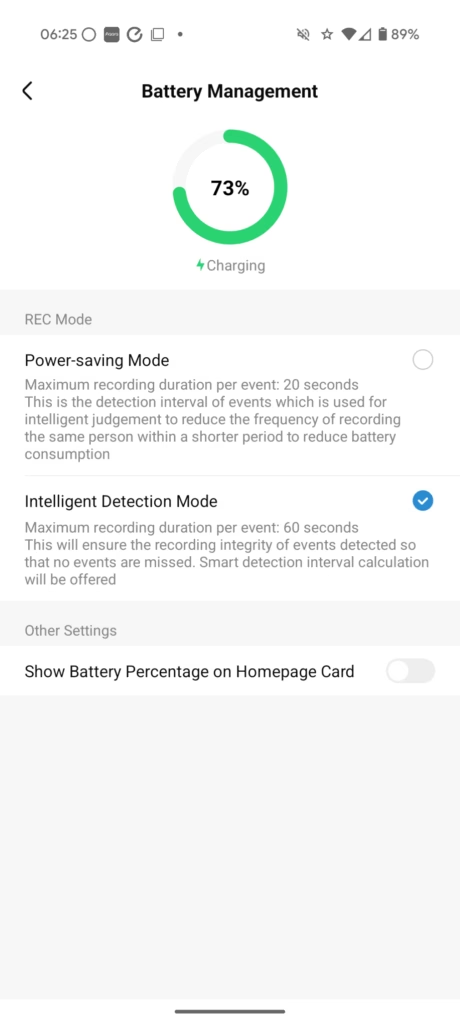

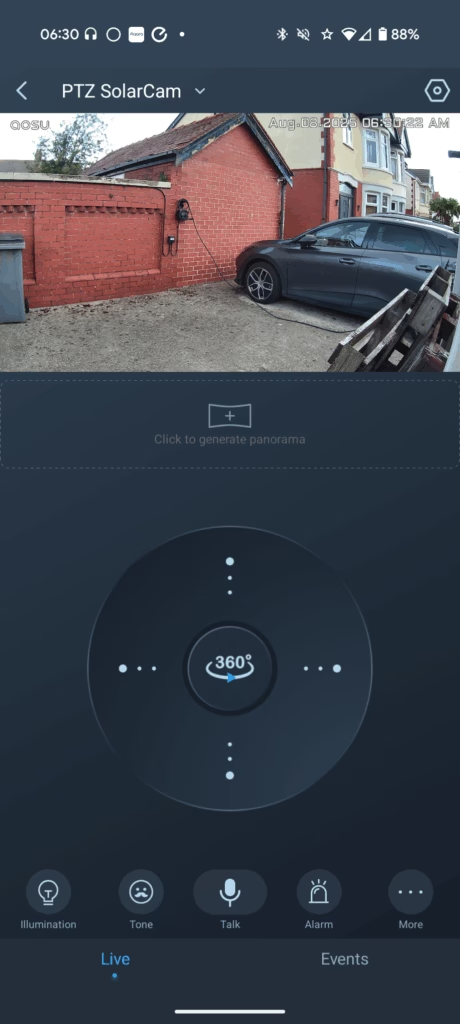
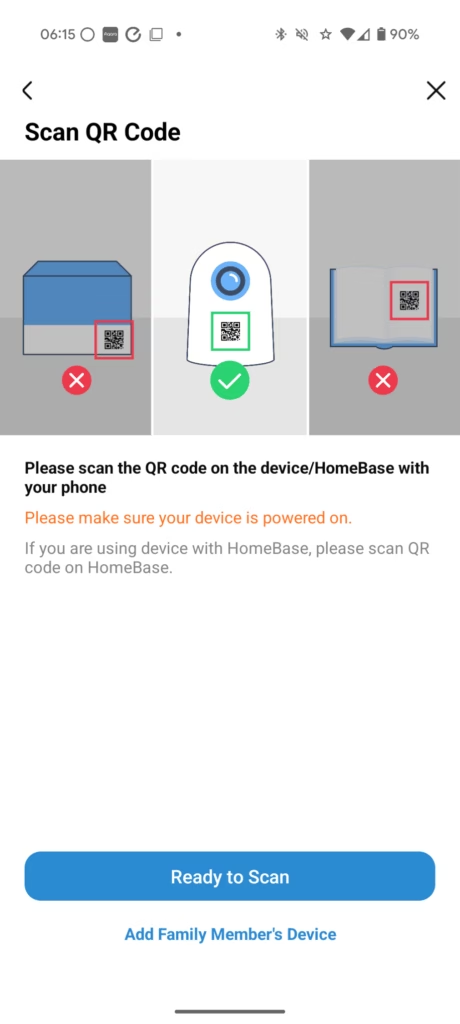


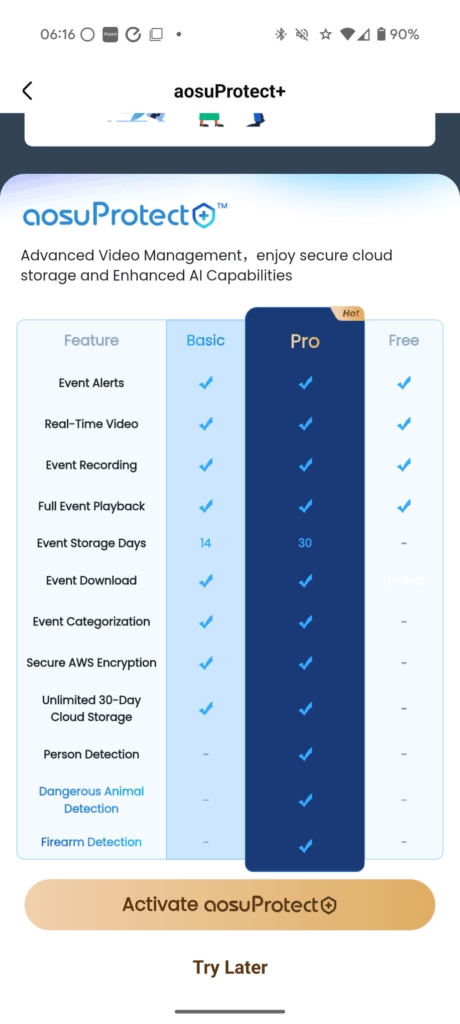
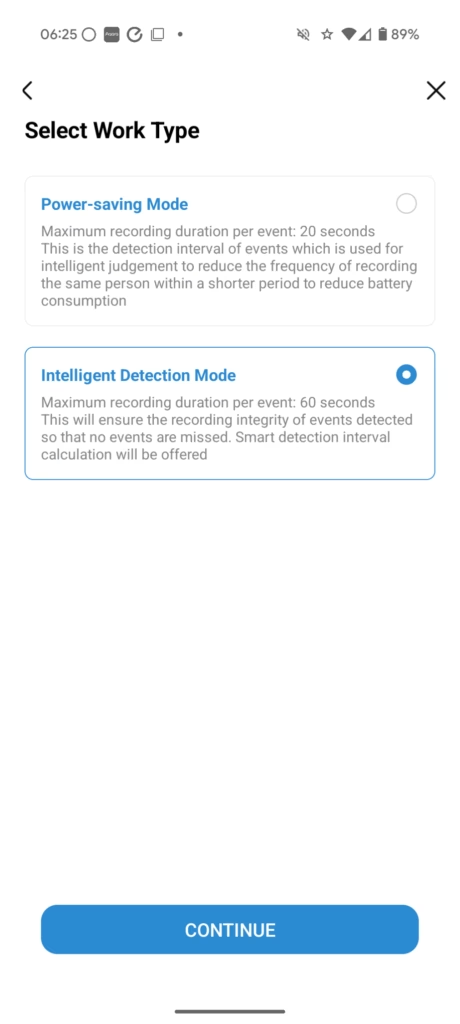

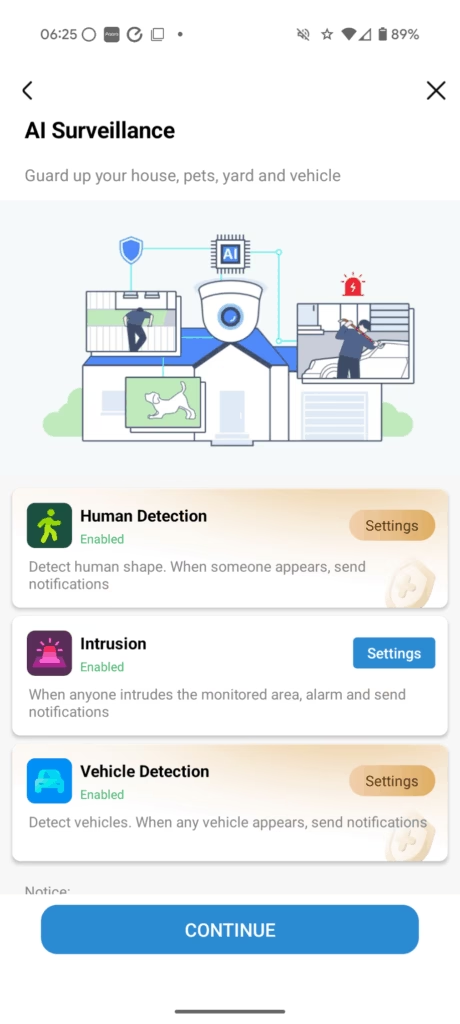
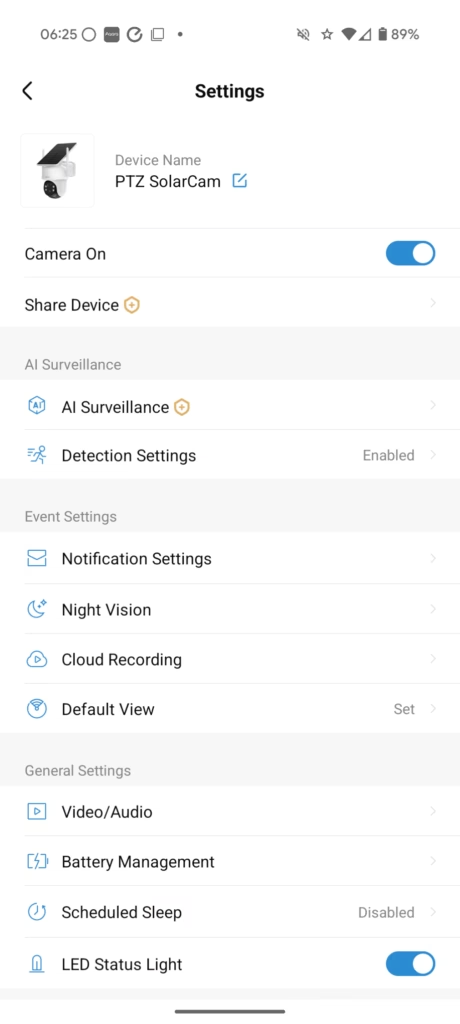
The Aosu app, available for both iOS and Android, remains stable and functional. The main dashboard gives straightforward access to live views, playback, and configuration options.
Features Worth Noting:
- Multi-Cam View: The ability to monitor up to four cameras at once is a positive addition, particularly useful when checking multiple entry points simultaneously.
- Motion Zones: Customisable activity zones help minimise redundant alerts from passing cars or animals, and alerts can be minimally tailored to preference.
- Notifications: Alerts come through promptly and are easily distinguishable, though there is room for improvement in their customisation options for advanced users.
- Playback: Reviewing recorded footage is seamless, with smooth playback and quick access to event markers.
- Device Management: Adding and managing multiple cameras is straightforward and well laid out.
Motion Detection
The AI motion detection performs well, and subjectively, it seems better than the older model.
The customisable detection zones help further minimise unwanted alerts, a feature which I found valuable in a street-facing environment.
However, on occasion, passing animals such as cats were still detected as human movements, suggesting there may still be room for improvement in object differentiation. Notification delays were rare, but did occur when Wi-Fi signal strength was lower.
Day Time Footage
Daytime video quality from the new 5MP/3K Ultra-HD cameras is impressive. Colours appear accurate and details are sharp, even in shadowed areas. Facial recognition is straightforward, and identifying vehicle plates is possible at moderate distances.
I found minimal artefacting or blurring, even during rapid movement, which marks a notable improvement over the previous generation. The increased resolution will be welcomed by those needing clarity for insurance claims or law enforcement purposes.
Night Time Footage
Night performance is solid, thanks to improved sensor sensitivity and IR illumination. Footage remains fairly detailed in complete darkness, and the transition from daylight to night mode is swift and unobtrusive.
Faces can be identified at close range, though fine detail is naturally reduced compared to daylight recordings. The IR LEDs do a competent job of lighting up the immediate area without producing excessive glare or overshooting the field of view.
In some tests, I did note minor motion blur when subjects moved quickly through the frame at night, so those seeking forensic-level detail in low light might compare carefully with more specialist products.
Battery Life
One of the main draws of these cameras is the integrated solar panels, designed to maintain battery levels without frequent manual charging.
When I first mounted the camera, it was on around 75% and by the end of day two it was at 95%
During several weeks of use, I didn’t need to charge the cameras, even in the inclement and cloudy conditions typical of British weather. It consistently stayed above 90% when I checked it.
It is worth noting, that my testing has been during July and August, while the weather hasn’t been great recently, I suspect that I may need to charge the camera on occasion during the Winter months.
The system also provides timely alerts when battery levels drop, and the app offers easy visibility of all relevant power statuses.
Price and Alternative Options
The Aosu SolarCam D1 Classic 6-Cam Kit has an RRP of £608, and at the time of writing, the Aosu website had it discounted to £501.
The older 4-camera C9C-4H SolarCam D1 Classic has an RRP of £387 and is discounted to £258. Amazon listed it at £240, and with a 10% off voucher available.
When I reviewed the C9C-4H SolarCam D1 last year, it was £400 RRP and discounted to £330 on Prime Day.
Overall
I was impressed with the Aosu C9C-4H SolarCam D1 Classic Kit when I reviewed it a year ago.
This system has all the same positive qualities as my previous review, but with more cameras, better camera resolution, and built-in 32GB storage.
The one caveat is the price. If you need six cameras, then the choice is simple, but the price of the new system seems disproportionately higher than the older system. The camera performance isn’t massively improved, and microSD cards are cheap as chips, so the main benefit is the increased camera support. If you can live with four cameras, the older system seems like a much better value for money.
While not without its drawbacks, Aosu’s latest security kit comes closest to fulfilling the needs of bigger households and those focused on minimising maintenance. Adoption will depend mainly on the importance placed on extended camera support and storage options, weighed against budget and actual coverage needs.
Aosu SolarCam D1 Classic Review with Upgraded HomeBase & Six Cameras
Summary
The upgraded Aosu SolarCam D1 Classic Kit delivers solid performance with sharper 5MP resolution, improved Wi-Fi range, and a HomeBase capable of supporting up to six cameras. The built-in 32GB storage and option for 1TB expansion remove the hassle of swapping SD cards, while solar charging maintains strong battery levels even in cloudy British weather. Installation remains straightforward, and the app provides reliable control with useful features such as multi-camera viewing and motion zones. However, the price jump over the previous model feels steep, especially as overall image quality improvements are incremental. For those needing six cameras, it is a capable, low-maintenance system, but the older four-camera kit still offers better value for smaller setups.
Overall
80%-
Overall - 80%80%
Pros
Sharp 5MP image quality
Reliable solar charging
Easy multi-camera setup
Built-in expandable storage
Strong app performance
Cons
Higher cost than older model
Minor motion blur at night
Occasional detection errors
Pricey for smaller setups
I am James, a UK-based tech enthusiast and the Editor and Owner of Mighty Gadget, which I’ve proudly run since 2007. Passionate about all things technology, my expertise spans from computers and networking to mobile, wearables, and smart home devices.
As a fitness fanatic who loves running and cycling, I also have a keen interest in fitness-related technology, and I take every opportunity to cover this niche on my blog. My diverse interests allow me to bring a unique perspective to tech blogging, merging lifestyle, fitness, and the latest tech trends.
In my academic pursuits, I earned a BSc in Information Systems Design from UCLAN, before advancing my learning with a Master’s Degree in Computing. This advanced study also included Cisco CCNA accreditation, further demonstrating my commitment to understanding and staying ahead of the technology curve.
I’m proud to share that Vuelio has consistently ranked Mighty Gadget as one of the top technology blogs in the UK. With my dedication to technology and drive to share my insights, I aim to continue providing my readers with engaging and informative content.

